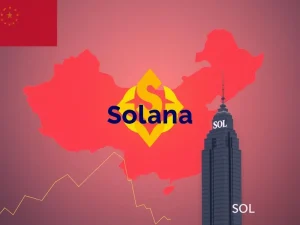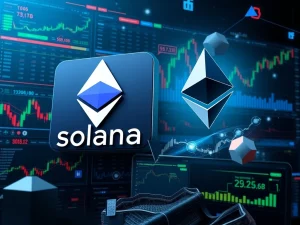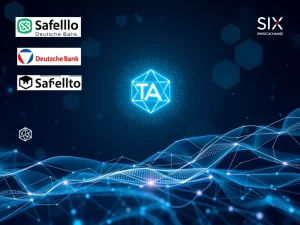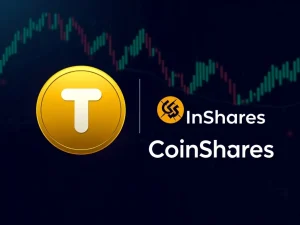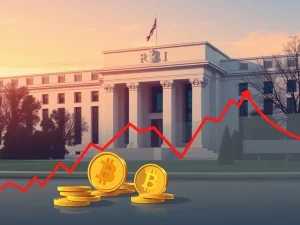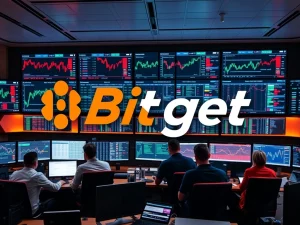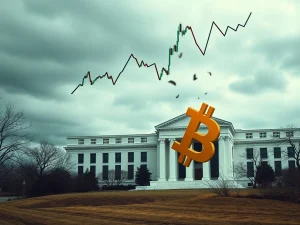Groundbreaking Solana ETF: Grayscale Enters Staking Race with Bitwise
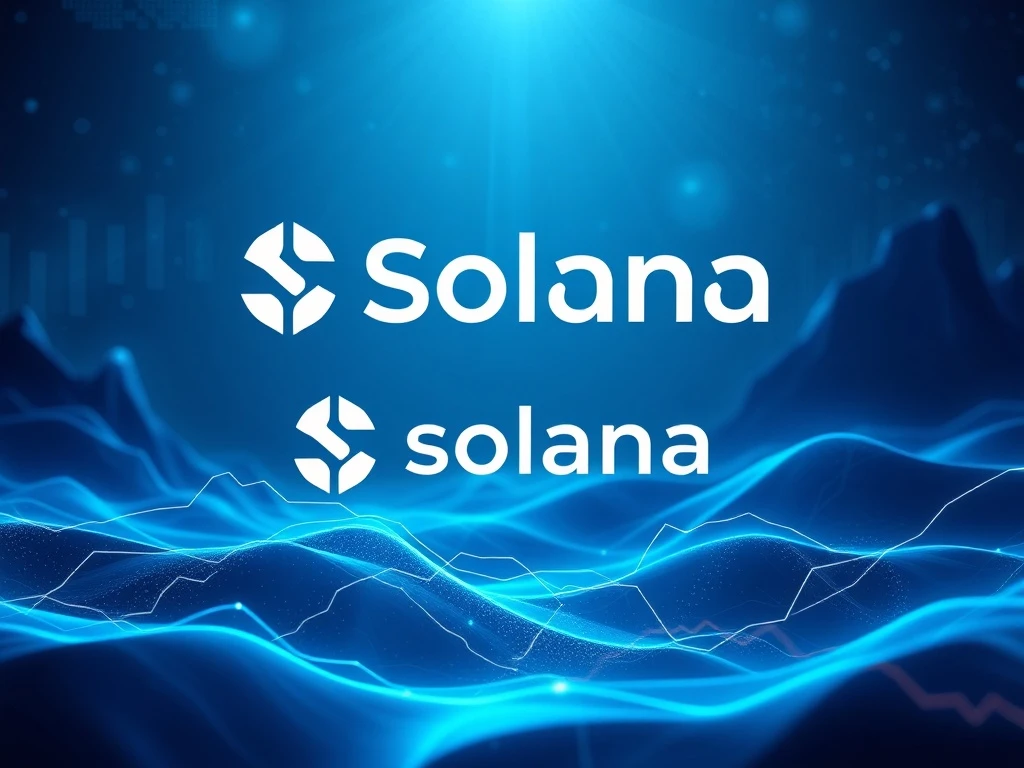
The cryptocurrency market continues its remarkable evolution. A new era of institutional investment is dawning. Investors now witness a significant milestone for Solana (SOL). The launch of new Solana ETF products marks this shift. These products offer unprecedented access to the high-performance blockchain. Importantly, they also feature staking capabilities. This development signals growing mainstream acceptance for digital assets.
The Arrival of Grayscale Solana ETF
Grayscale Investments has officially debuted its staking-enabled Solana ETF. This launch occurred on the NYSE Arca. It operates under the ticker GSOL. This move significantly expands institutional access to Solana. Grayscale’s product includes staking functionality. Consequently, investors can earn rewards from Solana’s proof-of-stake (PoS) network. Inkoo Kang, Grayscale’s senior vice president of ETFs, emphasized the product’s role. She stated it provides “expanding investor choice.” Grayscale now ranks among the largest Solana exchange-traded product (ETP) managers in the United States by assets under management (AUM). Their initial seed capital stood at $102.7 million. This substantial backing highlights strong market confidence in Solana’s potential.
Bitwise Solana Leads the Staking Charge
Grayscale’s launch follows closely behind another major player. Bitwise introduced its own staking Solana ETF just days earlier. The Bitwise product debuted with an impressive $222.9 million in AUM. This figure was more than double Grayscale’s initial seed. Bitwise also saw significant inflows on its first day. Data from Farside Investors shows $69.5 million in additional capital. This rapid uptake demonstrates robust demand. The market eagerly embraces these new investment vehicles. Both Grayscale and Bitwise are now key players. They lead the charge in offering regulated access to Solana. Their products are designed for institutional and retail investors alike. The competition between these firms benefits the entire ecosystem.
Comparing Grayscale and Bitwise Solana ETFs
The nascent US Solana ETF market currently features two primary contenders. These are the offerings from Bitwise and Grayscale. Together, they injected $325.6 million in seed capital. Both products integrate staking. This feature allows investors to participate in network security. They also earn rewards. However, differences exist in their reward distribution models. Understanding these distinctions is crucial for potential investors.
| Feature | Grayscale Solana ETF (GSOL) | Bitwise Solana ETF |
|---|---|---|
| Launch Platform | NYSE Arca | [Platform not specified in source, but implied US exchange] |
| Initial Seed Capital | $102.7 million | $222.9 million |
| First-Day Inflows | N/A (not specified) | $69.5 million |
| Staking Reward Distribution to Investors | 77% | 72% |
| Manager Retained Staking Rewards | 23% | 28% |
This comparison reveals key operational differences. Grayscale offers a slightly higher percentage of staking rewards. This could attract certain investors. Conversely, Bitwise launched with a larger initial AUM. This indicates strong early institutional backing. Both firms contribute significantly to the broader adoption of crypto ETFs.
The Impact of SOL Staking ETFs on Market Dynamics
The introduction of staking-enabled Solana ETF products carries profound implications. These funds do more than just provide exposure to SOL’s price movements. They actively engage with the network. Kristin Smith, president of the Solana Policy Institute, highlighted this benefit. She stated, “through staking in these products, investors aren’t just gaining exposure – they also have the opportunity to help secure the network, accelerate innovation for developers, and earn rewards.” This dual benefit makes these ETFs particularly attractive. Investors can gain returns from price appreciation. They also earn passive income from staking. This mechanism directly supports the network’s integrity and performance. It incentivizes long-term holding. This could reduce price volatility. Furthermore, it adds a new layer of utility to the investment product.
Why SOL Staking Matters for Investors
SOL staking involves locking up Solana tokens. This process secures the proof-of-stake network. In return, participants receive rewards. These rewards compensate holders for their contribution. For ETF investors, this means a portion of the staking yield is passed on. Grayscale redistributes 77% of all staking rewards to its investors. Bitwise, on the other hand, distributes 72%. While staking offers rewards, it also entails certain risks. These risks include potential slashing penalties. There is also illiquidity during the lock-up period. However, the ETF structure aims to mitigate some of these complexities for investors. They gain exposure without direct management of staking operations. This simplified approach lowers the barrier to entry for many. It makes participation in the Solana ecosystem more accessible.
Analyst Predictions and Future Growth for Solana
The launch of these crypto ETFs has generated considerable optimism. Analysts predict significant inflows into Solana. Ryan Lee, chief analyst at Bitget exchange, shared a bullish outlook. He suggested Solana “could attract between $3–$6 billion in its first year.” Lee views the ETF approval as a “transformative” milestone. This substantial capital influx could fuel Solana’s ecosystem. It might accelerate development and adoption. Such predictions underscore the market’s excitement. They highlight the potential for continued growth. The institutional stamp of approval through ETFs lends credibility. It opens doors for broader mainstream investment. The demand for regulated crypto products is clearly increasing. This trend benefits assets like Solana.
The Broader Landscape of Crypto ETFs
The emergence of Solana ETF products fits into a larger narrative. The cryptocurrency industry is maturing. Regulated investment vehicles are becoming more common. Bitcoin ETFs paved the way. Now, altcoin-specific ETFs are gaining traction. This signifies a broadening of institutional interest beyond just Bitcoin. Investors seek diversified exposure. They want access to high-growth altcoins. Solana, with its robust technology and growing ecosystem, stands out. Its ability to handle high transaction volumes and low fees makes it appealing. These ETFs provide a regulated and familiar investment wrapper. They attract traditional investors. These investors might otherwise hesitate to engage directly with digital asset exchanges. The ongoing trend suggests more crypto ETFs will likely follow. This could include other prominent altcoins. The financial world is increasingly integrating digital assets. This integration is driven by innovation and investor demand.
Conclusion: A New Chapter for Solana and Crypto ETFs
The debut of Grayscale’s staking-enabled Solana ETF marks a pivotal moment. It joins Bitwise in offering institutional investors a new avenue. This avenue provides exposure to Solana’s growth and staking rewards. These developments underscore a growing trend. Traditional finance is embracing digital assets. The significant seed capital and analyst predictions highlight strong market confidence. As the landscape of crypto ETFs expands, Solana is well-positioned. It can attract substantial investment. This will further solidify its role in the evolving digital economy. Investors now have more sophisticated tools. They can engage with the dynamic world of cryptocurrencies. This represents a significant step forward for the entire industry.

